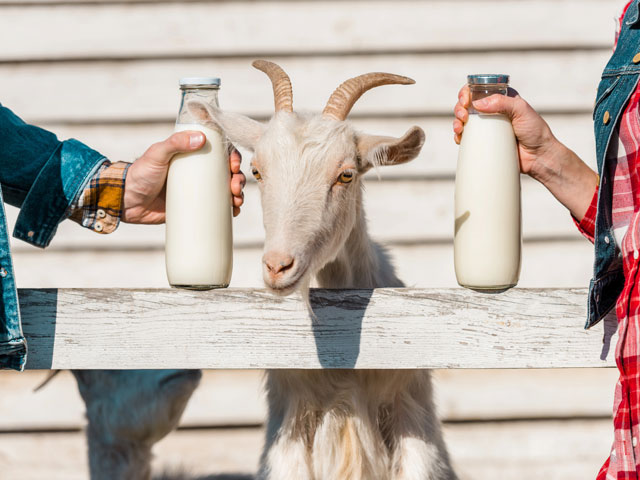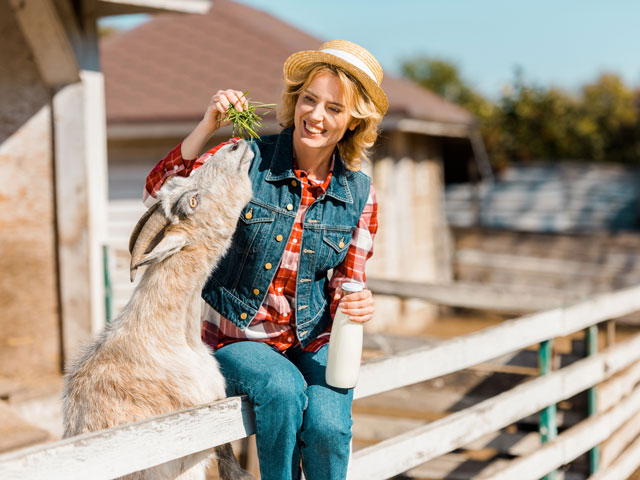How to Make Goat Milk Soap
Goat Milk Soap is a gentle, creamy soap that benefits the skin from the natural moisturizing properties of goat milk. Do it right and you will have a balanced bar that gives a real good lather in the bathtub.

Prepping Your Recipe
Before you can start your cold process goat soap, it's essential to gather up your core ingredients. That includes, frozen goat milk, lye (sodium hydroxide), olive oil, coconut oil, and sweet almond oil. You also need some soap molds at the ready.
For a standard batch, you'll need 16 ounces of frozen goat milk, 6 ounces of lye, 24 ounces of olive oil, 16 ounces of coconut oil, and 8 ounces of sweet almond oil. The even numbers and multiples make everything easier as it helps with ratios: half as much almond oil as coconut and so on.
Safety Precautions
Lye is a harsh chemical, so buckle up on the safety gear. Proper protective equipment (PPE) is non-negotiable. You'll need to wear safety goggles, chemical-resistant gloves, and long sleeves at a minimum. Keep your workspace well-ventilated (an old barn would be cool), and make sure that all equipment is either stainless steel or plastic, as lye reacts dangerously with aluminum.
Soap Making Process
The process begins with frozen goat milk, which helps control the temperature reaction when combining with lye. The milk should be frozen into cubes, and then the lye is carefully added to the frozen milk while stirring constantly (never do this in reverse). This mixture needs to stay below 90 degrees Fahrenheit to prevent scorching of the milk proteins.
While the lye mixture is cooling, combine the oils and heat to 90 degrees Fahrenheit. Successful soap making comes from having both the lye mixture and the oils at matching temperatures when they mix together. Once the temperatures align, the two mixtures are combined and blended until they reach what's called "medium trace". Medium trace is a pudding-like consistency that holds its shape briefly when drizzled on the surface.
Once you get here, the soap mixture will now be ready to pour into your molds. The filled molds should be insulated and left undisturbed for 24 hours to allow the saponification process to complete. After this initial setting period, the soap can be removed from the molds and cut into bars.
It might feel like you're done, but you still need to cure the soap in a well-ventilated area. This is gonna run anywhere from 4-6 weeks. During this time, excess water evaporates, and the soap becomes milder and more durable.

Frequently Asked Questions (FAQs)
Where can I source Goat Milk?
Here are a few venues to buy Goat Milk.
- Local Dairy Farms. Local farms often provide the highest quality fresh goat milk directly from the source. So get out there and build a relationship with Ol' Farmer Jim. Keeping small farms and farming practices alive is what we need more of. Plus, this will ensure that the milk you receive comes from healthy, well-cared-for animals. It's also possible to haggle a lower product price as goat milk made for drinking needs to be at a certain standard of aesthetic for human consumption.
- Farmers' Markets. The local Farmers Market is a great place to source high-quality Goat Milk. If a vendor doesn't offer it, they will most likely know someone who does. What's best is that you can either return to the farmers market after making your Goat Milk Soap to personally sell it, or, negotiate with the milk producer to see if they will sell your soap on your behalf while taking a cut.
- Specialty Markets & Shops. Organic/Specialty markets tend to offer a variety of products that regional and national grocers do not. This could be the best route to take for urban soap makers that don't have access to farms and local farmers. The one benefit here is the ability to facilitate potential bulk orders through the market.
Is Goat Milk Soap good for your skin?
At its core, goat milk contains alpha-hydroxy acids (AHAs), particularly lactic acid, which gently exfoliates the skin by breaking down the bonds between dead skin cells. This natural exfoliation process is notably gentler than many commercial chemical exfoliants, making it especially suitable for sensitive skin.
The fat molecule structure in goat milk is remarkably similar in size to those in human skin, allowing goat milk's fats to be readily absorbed. This in turn helps maintain the skin's moisture barrier.
Goat milk is also rich in vitamins, particularly vitamin A, which supports skin cell turnover and repair. It contains selenium, an antioxidant that helps protect skin cells from damage, and vitamin E, which supports skin healing and helps prevent premature aging.
Another remarkable aspect of goat milk soap is its pH level, which is very close to human skin (around 5.6). And for people with skin conditions like eczema or psoriasis, goat milk soap can reduce redness and irritation.
How do you make Goat Milk Soap without Lye?
Technically, you can't make Goat Milk Soap without lye, or, any soap for that matter.

Goat Milk Soap vs. Donkey Milk Soap
Goat milk soap contains higher fat content and more medium-chain fatty acids, making it deeply moisturizing and good for dry skin conditions. It's rich in lactic acid and vitamin A, supporting gentle exfoliation and cell turnover. The benefits of Donkey milk soap on the other hand are that it has lower fat content but higher protein levels and vitamin C. It contains more lysozyme, an antibacterial enzyme, making it particularly effective for acne-prone skin.
Both contain lactose and alpha-hydroxy acids, but donkey milk soap tends to be gentler and more suitable for extremely sensitive skin, while goat milk soap provides superior moisturizing benefits. Donkey milk soap is typically more expensive due to limited milk production and availability. But hey, inquire at the farmers market as you never know who is sitting on a few hundred gallons of burro milk.